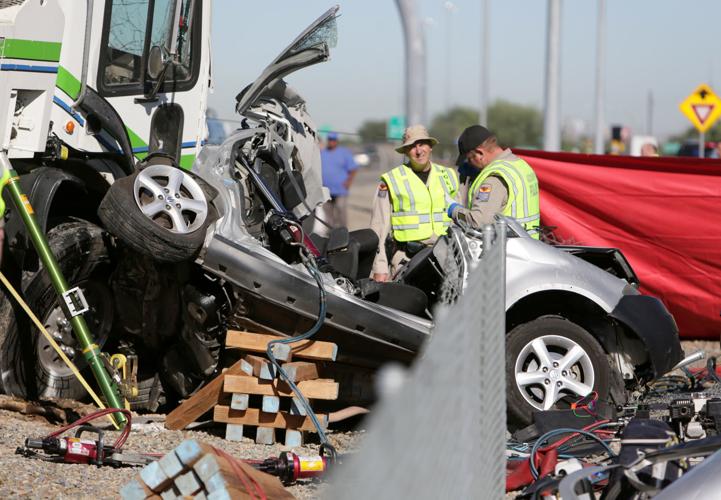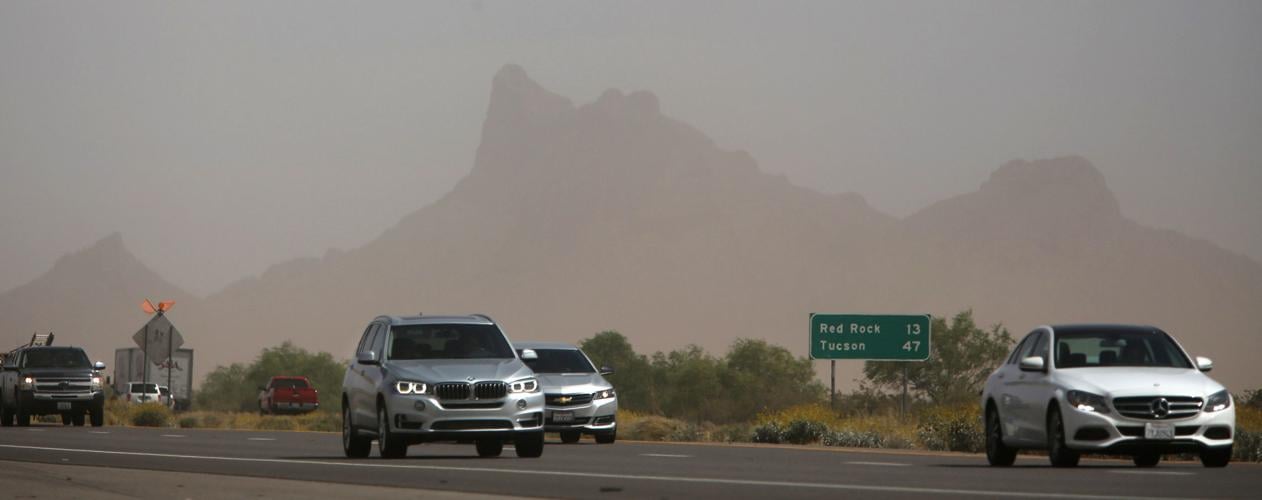A new report ranking the deadliest highways in the nation calls Interstate 10 the “most dangerous” in Arizona.
But Arizona highway officials say the ranking is incomplete and overlooks a variety of efforts made to make the highway that links the two most populous metro areas in the state as safe as possible.
There were 100 fatalities on Arizona’s nearly 400 miles of I-10 from 2015 to 2017, according to ASecureLife’s report, which used statistics from the National Highway Traffic Safety Administration.
The company, which mainly deals in security systems, said it seeks to report on everyday issues affecting consumers.
“The ASecureLife team aims to help consumers stay informed on issues that can affect their safety or security,” company officials said.
“We do this through continuous research, tests, reviews and reports.”
Its reports have ranged from cyberbullying to making a 72-hour emergency survival kit.
The company noted in its highway report that it was not a basis for road safety rankings.
Steve Elliott, an Arizona Department of Transportation spokesman, said if the report ranking is dealing with safety, many factors were overlooked.
“Fatalities alone really shouldn’t be the sole indicator of a highway’s safety performance. You would need to look at variables including traffic volume,” Elliott said.
“I would note that I-10 is the state’s longest and most traveled freeway. Much of it passes through the state’s largest metropolitan area. It would also be valuable to examine all types of crashes, whether it’s a minor fender bender or a severe injury or fatal collision.”
Elliott added that I-10 is safe and “it’s designed to meet exacting safety standards.”
But Elliott did mention another important factor: driver behavior.
“It misses the point by focusing on the highway itself, instead of the behavior of the people who drive on it. I would add that driver behavior is far and away the leading factor in highway crashes,” Elliott said.
The validity of the newest report’s conclusion aside, I-10 in Arizona remains a long and dangerous route and ADOT continues to address it with a variety of safety improvements.
Room on the Road
When it comes to widening I-10 for thousands of users every day, transportation officials are continuing more than $100 million in improvements to make more room for more vehicles.
In August, the finishing touches were placed on 4 miles of I-10 in Casa Grande as part of the effort to go to six lanes of highway between Phoenix and Tucson.
Engineers are working on a study to widen some 23 miles of mostly four-lane segments of I-10 between Phoenix and Casa Grande.
A wider highway could help reduce the chance that the entire highway would need to be shut down due to a major wreck.
Officials, which included the Gila River Indian Community, said last November that the widening will be beneficial for the about 100,000 vehicles a day.
This study is on a fast track to completion. A tentative schedule has construction starting by 2023.
More dust, no problem
Dust storms have long been a safety concern along big chunks of I-10.
ADOT is installing a first-of-its-kind dust-detection system between Mileposts 209 to 219, north of Picacho Peak and south of Eloy.
This is home to one of the deadliest portions of I-10 in Arizona.
Construction crews are installing variable speed limit signs as part of the warning system, ADOT said last week. Installation should be completed later this year and the system will begin operating after testing.
“Construction is well on its way to including message boards, sensors to detect dust next to the highway and a weather radar providing a longer-range view,” ADOT officials said.
Possibly by this fall, we can look for the operational radar that will provide at least a 40-mile coverage area to spot incoming activity on the major thoroughfare from Phoenix to Tucson.
On the horizon
Installation of cable barriers in some I-10 medians is being discussed by the Arizona State Transportation Board.
The barriers, which could help cut the frequency of vehicles crossing into oncoming traffic lanes, has been championed by residents.
“As of now, the board has not set a date for a meeting to discuss this issue,” said Mike Humphrey, who continues his fight to get the thick steel cables on about a 20-mile stretch of I-10 between Tucson and Phoenix. That stretch of road is where he lost both his wife and sister due to a cross-median crash.
After speaking with representatives, “my understanding is that the only possible date for the (Arizona State Transportation Board) to discuss this issue is at the October 8 study session, which will be held at ADOT headquarters in Phoenix,” Humphrey said in an email.
Humphrey and others said the strong cables will add to the safety measures to further protect motorists.
“I (and I hope others) will speak to the board about the importance of this issue and the need to place it on their Oct. 8 agenda,” Humphrey said. “The more people who speak out at the meeting in Maricopa, the more likely the board will listen and take action.”
Down the Road
Overnight closures set for Arizona 83 at I-10: Motorists on I-10 and Arizona 83 in Vail should expect overnight delays through late September due to roadwork.
From 8 p.m. to 6 a.m., Sundays through Thursdays, construction crews will close the Arizona 83 bridge to all traffic. Vehicles crossing I-10 at the bridge will be detoured to Wentworth and Sahuarita roads.
There will be a single lane in each direction along I-10. Some eastbound motorists may be detoured off the interstate to the exit ramp and reenter using the on-ramp.
Westbound traffic on I-10 will be diverted to a temporary bypass in the median.
After 6 a.m., the Arizona 83 bridge will be restricted to a single lane with a temporary signal to allow traffic to cross.
Let Pima County know which roads to fix: The Pima County Transportation Advisory Committee is launching a survey Monday to hear from the public about repairing county roads. Officials are in the process of setting criteria for which $26 million in road repair funds will be spent. You can find more information at http://tucne.ws/1b3l
Oro Valley roundabout work starts Wednesday: Oro Valley construction crews are planning for a two-month roundabout project that will close the La Cañada Drive and Moore Road intersection beginning this Wednesday.
Access to the intersection will be shut down to all traffic except emergency vehicles.
Pedestrians, drivers and bicyclists will be detoured at a four-way stop before the La Cañada and Moore Road intersection. There will be access to travel northbound or southbound on Copper Springs Trail or Salt Cedar Drive.
Dutch Drive, which bridges La Cañada Drive and Moore Road, was also added as a detour option this week.





